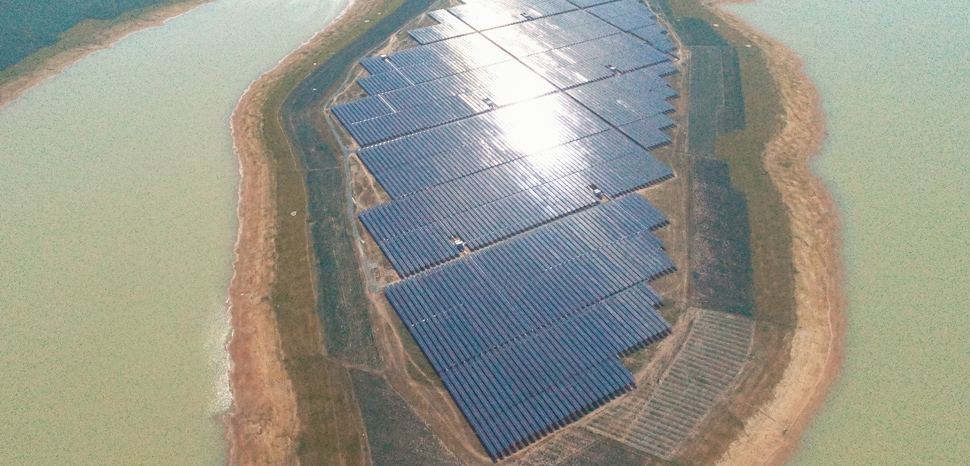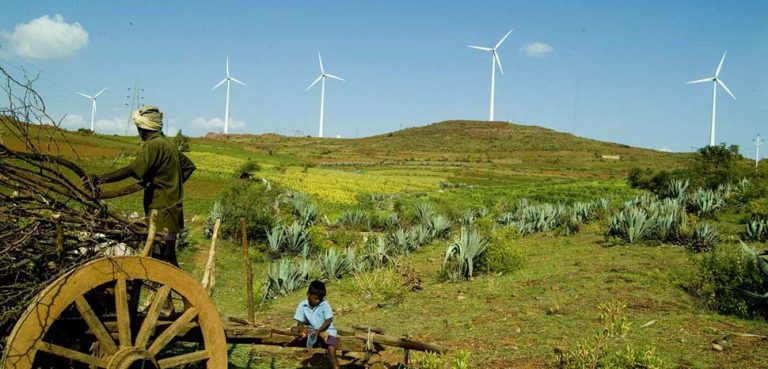Vietnam recognizes that the transition to green energy has never been more urgent. As one of the fastest-growing economies in Southeast Asia, Vietnam’s march to industrialization has left a huge carbon footprint and taken a toll on its environment. As a result, Hanoi’s planners are reshaping their energy market with solar and wind to reduce the country’s reliance on fossil fuels, ensure energy security, and cut carbon emissions.
The road to replace fossil fuels, especially coal-fired plants, has moved at a glacial speed for decades. With Vietnam’s citizens mired in daily pollution, dire climate change problems, and higher levels of respiratory disease, there’s a critical need to boost clean energy. The Communist Party leadership has now issued a regimented directive to explore alternative energy sources. This willingness to embrace energy replacements often starts when a nation begins to rely on imports to power its electric grid, as Hanoi has with coal and crude oil imports.
The Vietnamese wore their necessary facemasks long before the arrival of COVID-19, as the increasing number of cars and the ubiquitous motorbikes choked the streets of Hanoi and Ho Chi Minh City, where pollution levels are four times higher than the World Health Organization (WHO) considers acceptable.
The message is simple and clear. Renewables will soon surpass coal as the biggest source of power generation on a global basis. “Our numbers show that renewables are set to become the largest source of generation by 2025, overtaking coal and ending the fossil-fuel domination of the last decades,” claims Fatih Birol, executive director of the International Energy Agency.
To be clear, Vietnam’s energy markets are controlled by sclerotic state-owned enterprises (SoEs), notably Vietnam Electricity (EVN), Petro Vietnam (PVN), Petrolimex, and the Vietnam National Coal-Mineral Industries Group (VINACOMIN).
Six years ago, the country’s electricity mix was dominated by hydropower (46 percent), coal (29 percent) and natural gas (22 percent). By the end of 2019, wind and solar accounted for nearly 5,700 MW of installed capacity or almost 10 percent of the total supply.
This is not to suggest that Vietnam’s energy managers shifted seamlessly away from their fossil fuel commitments. Though dirty, coal-fired power generation increased by 72 percent from 2010-2017, simple economics helps to make a compelling case for change. With every new coal project, the marginal cost of electricity increased while consumer tariffs fell. The results were larger subsidies to bridge the gap, and this was coupled with the failure of domestic banks to offer credit for capital improvements.
This evolutionary ecological shift is attributed largely to the energy consumption needs of Vietnam’s expanding economy. After all, brownouts and rolling blackouts had been a feature of daily life in the country for too long. For many planners, the question was how electricity generation could keep pace with the churning economy?
For once, Party officials and environmentalists united and stood together on common ground, as part of an emerging anti-coal reliance energy chorus that also targeted Chinese-built and operated (BOT) coal projects.
The alternative voices were also fueled by an increase in environmental non-government organizations that proved instrumental in influencing policy shifts toward wind and solar power. An example of cooperation between the Party and environmental organizations was the creation of the Vietnam Sustainable Alliance (VSEA), a collective of domestic and international NGOs and experts. Their voices were added to the government’s revised Power Development Plan 8.
The public demand for environmental protection seems to be a common theme expressed by increasing numbers of young and older citizens. Serious and chronic air pollution continues to trigger public opposition to the development of new coal power plants.
Vietnam Electricity (EVN), the state-owned electric utility, reports that the amount of energy sold rose from 128.6 terawatt hours in 2014 to 209.4 in 2019. Subsequently, more energy experts may be starting to hum the lyrics from Blowin’ in The Wind, by songwriter Bob Dylan.
Change was indeed in the air. It was felt in the more than nine wind power projects, including the Tuy Phong wind farm in Binh Thuan, one of the first to be established in 2012. Developed by Renewable Energy Vietnam (REVN), a private company, the farm offers 20 turbines with a total of 30 MW installed capacity. There are other wind farms, like the Phu Quy Wind Farm on Phu Quy Island, about 75 kilometers off mainland Binh Thuan province.
Along with wind farms, there are also domestic solar companies like Solar BK, located in Ho Chi Minh City, initially contracted in 2012 to install solar PV and wind-power generation on the Spratly Islands (Truong Sa), according to energy policy expert, Dang Thi Thu Hoai in a published energy report.
She adds, “I think that people are now more aware of the need to protect the environment. Environmental aspects are an emerging opportunity to push the development of renewable energies.”
There’s an emerging pipeline of ambitious plans for solar photovoltaic (PV) farms. In addition, solar power developers are no longer linked exclusively with EVN and can build rooftop solar arrays in industrial parks and sell power directly to manufacturers or to EVN. Vietnam now boasts the highest capacity of solar power in Southeast Asia, generating 16,500 MW at the end of 2020. Last year, Sharp Energy Solutions completed a mega solar power plant in Ninh Thuan province, taking advantage of the country’s expanding energy demand.
The rapid rise in Vietnam’s solar power has been enhanced by Chinese finance and technology. According to China Dialogue, nearly 99% of the installed solar panels in Vietnam are made in China. Yet, Beijing is one of the few countries that also offer generous loans to Vietnam to build coal plants.
Dr. Nam H. Nguyen, deputy director of VAST Institute of Energy Science points out that “in areas where solar is good, there is very small demand, while in big consumption hubs like HCMC or Hanoi, there’s no land for solar.” Solar requires much more land resulting in network congestion and a reduction of the hosting capacity of the grid, adds Dr. Nguyen.
Some observers may believe that it’s too early to claim that solar PV has entered the mainstream in Vietnam. Yet, the UN’s Emissions Gap Report suggests that success in managing the transition to green energy could lead to developing countries leaping far beyond the carbon-intensive technologies that sustain wealthier nations.
For now, Vietnam’s East Sea and the Mekong Delta may offer just the right mix of power from wind and solar to brighten the nation’s future.
The views expressed in this article are those of the authors alone and do not necessarily reflect those of Geopoliticalmonitor.com




